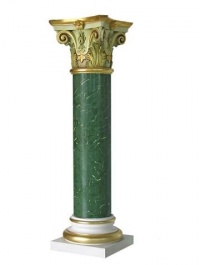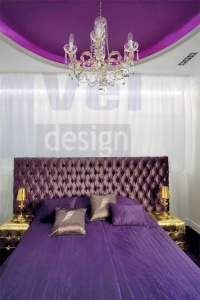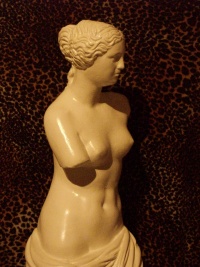Glossary
-
A
Architect: An individual, partnership, corporation or other legal entity licensed to practice the profession of architecture, trained in the planning, design and oversight of the construction of buildings. To practice architecture means to offer or render services in connection with the design and construction of a building, or group of buildings and the space within the site surrounding the buildings, that have as their principal purpose human occupancy or use. Architecture is a business in which technical knowledge, management, and an understanding of business are as important as design.
Scroll to Top
-
Architectural Ornament: something added to a building to improve its appearance; such as mouldings, cornices, friezes, medallions, capitals, columns, pilasters, corbels, reliefs, rosettes, domes, niches, statues and sculptures etc.
Scroll to Top
-
B
Baluster: One of a series of short vertical posts, often ornamental, used to support a rail.
Scroll to Top
-
Bracket: A projecting angled or curved form used as a support, found in conjunction with balconies, lintels, pediments, cornices, etc.
Scroll to Top
-
Brick Molding: A milled wood trim piece covering the gap between the window frame and masonry, which can be rectilinear, curved, or composite-curved.
Scroll to Top
-
C
Capital: The top of the column may be simple or elaborately decorated.
Scroll to Top
-
Ceiling Medallion: Plaster like ornamental round ceiling accent, sometimes used as a trim collar for ceiling fans or hanging lights. Can be used in a sequence to create interesting ceiling and wall designs.
Scroll to Top
-
Classical columns: Classical columns are built according to the Classical Orders of Architecture as recorded in the late 1500's by the Italian Renaissance architect Giacomo da Vignola. The classical column designs are: Doric, Ionic, Corinthian, Tuscan, Composite.
Scroll to Top
-
Column: Supporting or decorative pillar used in building. Upright supporting piece circular or rectangular in plan consisting of base, shaft and capital.
Scroll to Top
-
Corinthian Order: The Corinthian Order is one of the three principal classical orders of ancient Greek and Roman architecture. The other two are the Doric and Ionic Orders. When classical architecture was revived during the Renaissance, two more orders were added to the canon, the Tuscan Order and the Composite Order. The Corinthian, with its offshoot the Composite, is stated to be the most ornate of the orders, characterized by slender fluted columns and elaborate capitals decorated with acanthus leaves and scrolls.
Scroll to Top
-
Crown moulding: The moulding between the walls and the ceiling in a certain room.
Scroll to Top
-
D
Doric Order: The Doric order was one of the three orders or organizational systems of ancient Greek or classical architecture; the other two canonical orders were the Ionic and the Corinthian. In their original Greek version, Doric columns stood directly on the flat pavement (the stylobate) of a temple without a base; their vertical shafts were fluted with 20 parallel concave grooves; and they were topped by a smooth capital that flared from the column to meet a square abacus at the intersection with the horizontal beam (entablature) that they carried. The Parthenon has the Doric design columns.
Scroll to Top
-
F
Flute : One of the long, parallel, rounded, decorative grooves on the shaft of a column or pilaster.
Scroll to Top
-
Fluted columns: Columns whose shaft is articulated with vertical hollow grooves, so called method of fluting.
Scroll to Top
-
Frieze: 1. A plain or decorated horizontal part of an entablature between the architrave and cornice. 2. A decorative horizontal band, as along the upper part of a wall in a room.
Scroll to Top
-
I
Ionic Order: One of the five classical orders, characterized by capitals with spiral elements called “volutes,” a fasciated entablature, continuous frieze, dentils in its cornice, and by its elegant detailing.
Scroll to Top
-
K
Keystone: The central wedge-shaped piece at an arch that locks the other pieces in place.
Scroll to Top
-
O
Open composition: In open compositions shapes appear to be running off the edges and sides of the picture plane. This creates the sense that the work extends beyond the edges or boundaries of the picture which allows for more active eye movement. (opposite - close composition)
Scroll to Top
-
Ornament: A group of select, highly decorative wall and ceiling motifs, such as garlands, leaves, scrolls, shells, shields, sunburst, and wreath embellishments. Ball ornaments include urns, acorns, pineapples, etc.
Scroll to Top
-
P
Panelled Columns/ Pilasters: Columns which are decorated by different panels of moulding in the four edges of the pilasters.
Scroll to Top
-
Pediment: A pediment is used to describe the topmost piece of a formal entryway, interior door and windows. It is a classical architectural element consisting of the triangular section found above the horizontal structure (entablature), typically supported by columns. and includes the caps or heads which ornament windows and interior door. The gable end of the pediment is surrounded by the cornice moulding. The tympanum, or triangular area within the pediment, was often decorated with sculptures and reliefs demonstrating scenes of Greek and Roman mythology or allegorical figures.
Scroll to Top
-
Plinth: A square block – sometimes circular – which forms the lowest part of the base, and mouldings with profiles.
Scroll to Top



